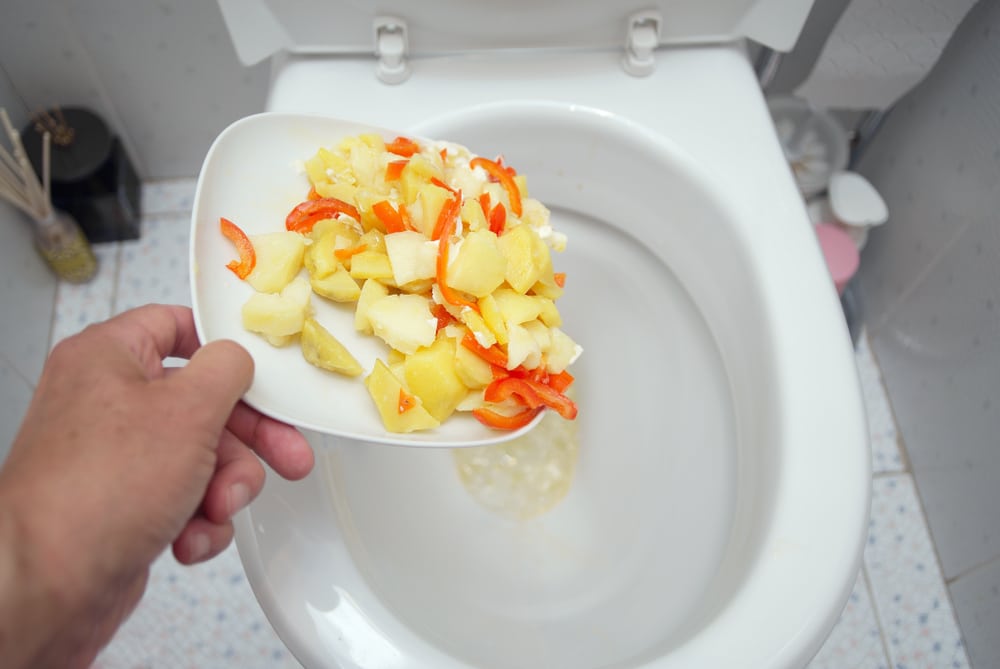Are You Allowed to Dispose of Food Down the Toilet?
Are You Allowed to Dispose of Food Down the Toilet?
Blog Article
We've stumbled on this great article pertaining to Is it safe to flush food (especially rice) down the toilet? below on the net and concluded it made good sense to discuss it with you in this article.

Introduction
Many people are frequently faced with the problem of what to do with food waste, particularly when it comes to leftovers or scraps. One typical concern that arises is whether it's fine to flush food down the toilet. In this article, we'll explore the reasons that individuals could take into consideration flushing food, the effects of doing so, and alternate approaches for correct disposal.
Reasons people may take into consideration purging food
Absence of understanding
Some people may not recognize the potential damage caused by purging food down the bathroom. They might erroneously think that it's a harmless method.
Convenience
Purging food down the toilet might look like a fast and very easy remedy to dealing with undesirable scraps, especially when there's no nearby garbage can readily available.
Idleness
In many cases, individuals may merely choose to flush food out of sheer idleness, without taking into consideration the repercussions of their activities.
Consequences of flushing food down the bathroom
Ecological effect
Food waste that winds up in waterways can contribute to pollution and harm marine communities. Furthermore, the water made use of to flush food can stress water resources.
Plumbing issues
Purging food can cause clogged pipelines and drains pipes, creating expensive pipes repair services and inconveniences.
Sorts of food that need to not be purged
Coarse foods
Foods with fibrous structures such as celery or corn husks can get entangled in pipelines and trigger clogs.
Starchy foods
Starchy foods like pasta and rice can take in water and swell, leading to clogs in pipes.
Oils and fats
Greasy foods like bacon or cooking oils need to never be purged down the bathroom as they can solidify and trigger blockages.
Appropriate disposal techniques for food waste
Making use of a waste disposal unit
For homes equipped with garbage disposals, food scraps can be ground up and purged with the plumbing system. Nevertheless, not all foods are suitable for disposal in this manner.
Recycling
Particular food packaging products can be reused, minimizing waste and minimizing environmental effect.
Composting
Composting is an environment-friendly means to get rid of food waste. Organic materials can be composted and used to enrich soil for horticulture.
The importance of proper waste administration
Lowering environmental damage
Appropriate waste monitoring practices, such as composting and recycling, aid lessen contamination and preserve natural resources for future generations.
Securing pipes systems
By staying clear of the technique of flushing food down the bathroom, property owners can stop pricey pipes repair services and preserve the honesty of their pipes systems.
Final thought
To conclude, while it may be appealing to flush food down the bathroom for comfort, it is necessary to comprehend the possible repercussions of this action. By embracing proper waste monitoring methods and disposing of food waste properly, individuals can contribute to healthier plumbing systems and a cleaner environment for all.
FLUSH FOOD DOWN THE TOILET?
FLUSHING FOOD CAN CAUSE BLOCKED DRAINS IN YOUR HOME
All of the plumbing fixtures in your home are connected to the same sewer pipe outside of your home. This outdoor sewer pipe is responsible for transporting all the wastewater from your home to the Council sewer mains. Even small pieces of food that go down the kitchen sink can cause problems for your sewer. It should therefore be obvious that flushing larger bits of food, such as meat, risks a clog in either the toilet itself or the sewer pipes. Flushing greasy food is even more problematic because oil coagulates when it cools, coating the interior lining of your pipes.
THE TOILET IS NOT A BIN
Food isn’t the only thing that people shouldn’t be flushing down the toilet. People use the toilet to dispose of all kinds of things such as tampons, makeup wipes, dental floss, kitty litter and even underwear. Water goes to great lengths to educate residents about the high costs and stress placed on wastewater treatment systems simply from people flushing the wrong stuff down the toilet. It costs taxpayers millions of dollars each year, and homeowners thousands in blocked drain repairs.
FLUSHING FOOD IS A WASTE OF WATER
Flushing food is a waste of our most precious resource - water. In June this year Level 1 water restrictions were introduced to protect water supply from drought conditions. Much of New South Wales continues to be affected by prolonged drought with recent figures revealing up to 97 per cent of the state remains in drought. Depending on whether you have a single or dual flush toilet, every single flush uses between five and 11 litres of water. In the current climate this is a huge amount of water to be wasting on flushing food that should be placed in the bin (or better yet, the compost).
https://www.jabplumbingsolutions.com.au/blog/can-you-flush-food-down-the-toilet

As an enthusiastic reader on Flushing Food Down the Toilet?, I assumed sharing that post was a good thing. In case you liked our page plz remember to pass it around. Thanks for your time. Come back soon.
Call Today Report this page